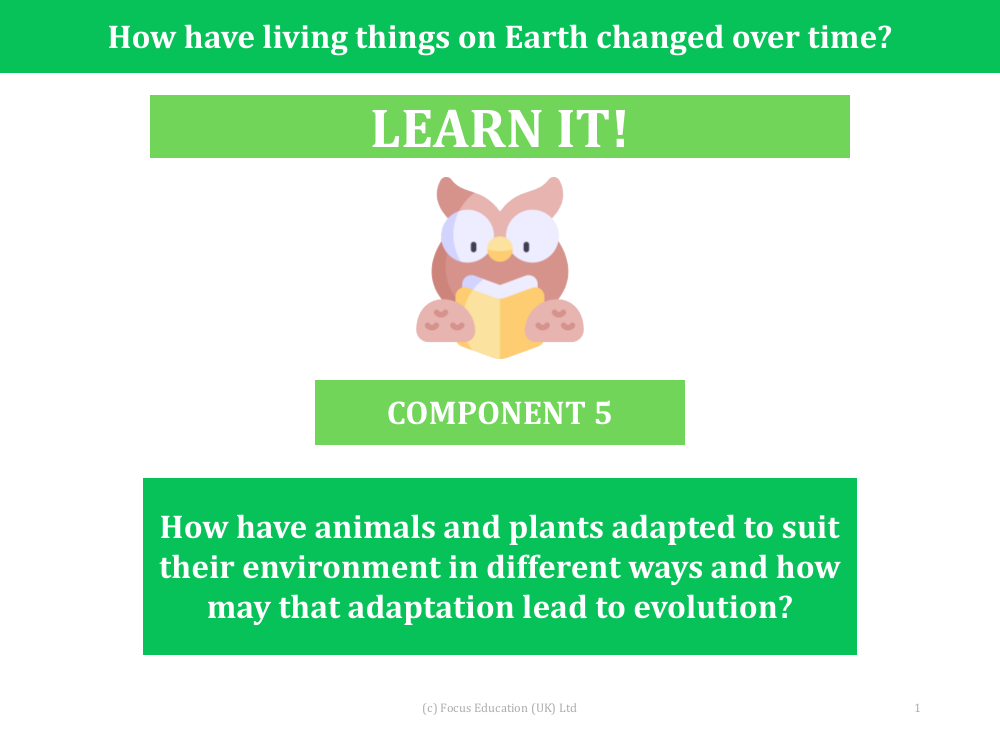How have animals and plants adapted to suit their environment in different ways and how may that adaptation lead to evolution? - presentation

Science Resource Description
Animals and plants have developed a myriad of adaptations to thrive in their respective environments, a process that can lead to evolution over time. Adaptations are special features or behaviours that help living organisms survive. For example, African elephants have evolved large ears to help regulate their body temperature in the heat, while polar bears have developed thick fur for insulation in the Arctic cold. Similarly, plants like cacti have adapted by growing long roots to absorb water over a large area and storing it in their stems to survive arid desert conditions. These adaptations are crucial as they enable organisms to cope with the specific challenges of their habitats, such as temperature extremes, food availability, and predation.
Understanding the link between adaptation and evolution is a key component of biology education. Students are encouraged to explore this by matching animals to their habitats and considering the adaptations they might have undergone. They can creatively devise their own animals, annotating the adaptive features that would help them survive in a chosen habitat, and engage in descriptive writing to illustrate these adaptations. Additionally, studying extinct animals, like the West African Black Rhinoceros and the Tasmanian Tiger, provides insight into the consequences when species can no longer adapt to changing environments or human impacts. Through research, group work, and presentations, students learn how the process of adaptation can lead to the evolution of species, shaping the diversity of life on Earth.



